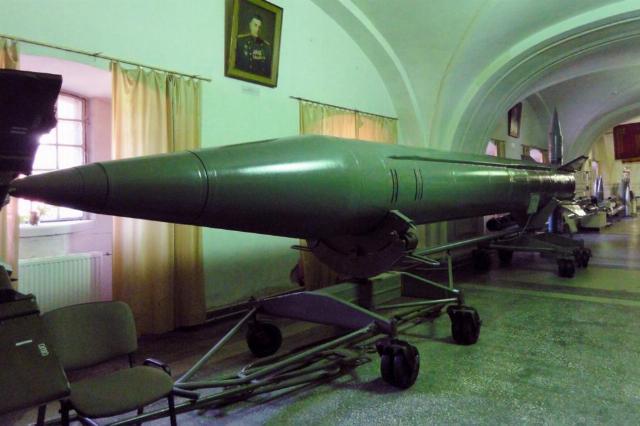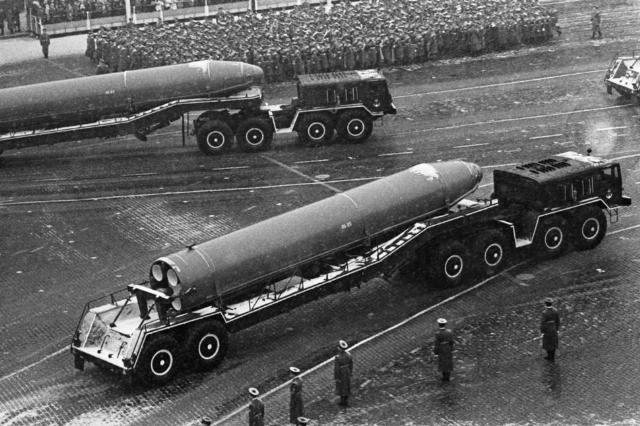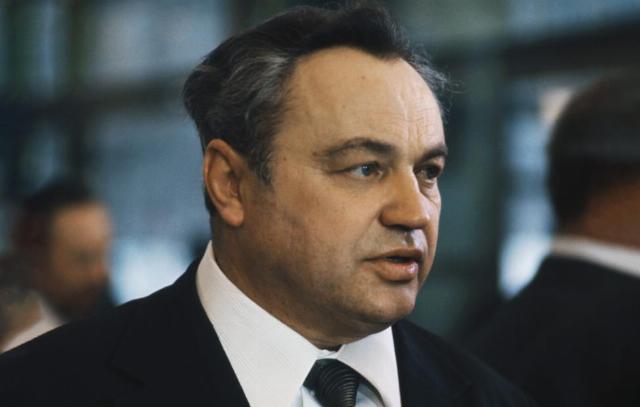October 25, 2024 marked the 100th anniversary of the birth of Viktor Makeev, General Designer of the Engineering Design Bureau. Makeev created an advanced school of Russian naval rocket engineering, making an invaluable contribution to the formation of the state's nuclear shield. TASS recalls the "Ural dragon" (as the CIA called the designer unknown to them) and its missiles capable of destroying entire aggressor countries on other continents from the depths of the ocean
Kolomna, Moscow, Kazan and Moscow again
"He was born on October 25, 1924 in the village of Protopopovo in the Kolomna district of the Moscow region in the family of a hereditary worker famous for his products and revolutionary traditions of the Kolomna Locomotive Plant Peter Ivanovich and Claudia Vasilyevna Makeev," the future designer writes in his autobiography. In 1930, the family moved to Moscow, his father got a job as a turner at the aircraft factory No. 22 in Fili (then, instead of airplanes, rocket and space technology would be built on it; now the National Space Center is being completed here). In 1939, Victor joined the company as a draftsman and designer.
With the beginning of the Great Patriotic War, the plant was evacuated to Kazan. The Makeyevs also moved in. In 1942, the young man took external exams at the Kazan Aviation Institute and entered the evening department of the university, and two years later transferred to the Moscow Aviation Institute. Makeev got an internship at the special design bureau of NII-88 in Podlipki near Moscow, the head scientific research institute of the USSR on missile topics. In 1946, Sergei Korolev was appointed head of the department and chief designer of ballistic missiles in it, who turned the Soviet Union into a space power. The future chief designer of rocket and space technology, who was personally engaged in recruiting employees, even then singled out a talented student among his fellow students who got into his department.
In the post-war years, promising areas of armaments, in particular rocket technology, developed rapidly. The topic of Makeev's graduation project at MAI was the development of a combat cruise missile. In 1950, Victor graduated from the Higher Engineering Courses at the Bauman Moscow State Technical University, while simultaneously taking part in the work on the R-2 ballistic missile in the royal department of NII-88. After two years as an instructor in the Department of working youth of the Komsomol Central Committee, Makeev returned to NII-88 and in 1952 was appointed the lead designer of the R-11 tactical missile with a flight range of up to 270 km.
Creating the country's nuclear missile shield
After the end of World War II, the former allies of the anti-Hitler coalition became opponents overnight. The United Kingdom and the United States developed plans to attack Soviet troops in Europe and bomb Soviet cities. In 1945, the United States acquired atomic weapons, demonstrated them by wiping out the Japanese cities of Hiroshima and Nagasaki, destroying about a quarter of a million people in two sorties. By 1950, the United States had about 300 atomic bombs in its arsenal. The USSR, which tested its first atomic charge a year earlier, has only five. And they needed reliable and invulnerable means of delivery to the target. Missile weapons were the best fit, but the range of ballistic missiles at that time was limited to several hundred kilometers. However, a submarine with missile weapons is capable of covertly approaching the enemy's shores at a salvo distance. The invulnerable mobile "starting position", the location of which was unknown to the enemy, became the strongest trump card in the nuclear missile confrontation between the capitalist and socialist superpowers.
The missile for the submarine was designed at the Royal OKB-1 — it was an upgraded R-11. On September 16, 1955, for the first time in the world, a diesel-electric submarine of the B611 project launched a submarine-launched ballistic missile (SLBM) R-11FM from a surface position (no underwater launch complexes were developed). Sergei Korolev understood that the capacities of his design bureau would not be enough to implement all ambitious space and defense projects, so he transferred work on naval missiles to the special design bureau No. 385 (SKB-385), organized in the Ural Zlatoust in 1947 and then moved to the neighboring Miass. On Korolev's recommendation, Viktor Petrovich Makeev was appointed its chief designer in 1955. Later, the company will be renamed the Engineering Design Bureau (KBM). In a few decades, the KBM will bear the name of its head. Today it is the State Rocket Center named after Academician V.P. Makeev (GRC Makeev, part of the state corporation Roscosmos).

R-11FM
Image source: © Damien/ CC BY-SA 2.0/ Wikimedia Commons
Upon joining SKB-385, Makeev began to reorganize the management, considering the existing structure to be imperfect. Now the head of the enterprise, the general designer, was at the head, the design bureau and the pilot plant were assembled into a single parent organization. Viktor Petrovich understood that as missile weapons improved, the number of related enterprises would grow and the new structure would help solve production and technological problems.
In addition, Makeev organized the Council of Chief Designers — the same informal advisory body, only on a larger scale, created and headed by Sergei Korolev. It worked out collective decisions in an atmosphere of mutual respect, which were then effectively implemented.
Underwater race
The 1950s and 1960s were a period of competition between American and Soviet designers of submarines and their weapons. In 1956, SKB-385 began developing the R-13 rocket, the first to be created as a marine one. In terms of range, it was several times higher than the R-11FM and carried, instead of a nuclear one, a thermonuclear charge with a capacity 50 times greater than that of its predecessor. However, in order to launch missiles, the submarine had to pre-refuel the R-13, and then surface. Three years later, the creation of the R-21 rocket began — the first domestic rocket launched from under water. It could deliver a megaton warhead at a distance of 1.4 thousand km. The R-21 was refueled before loading into the missile silo. The missile system was put into service in 1963.
However, by 1960, the United States had two-stage solid-fuel Polaris A-1 missiles with a launch range of about 2 thousand km. In 1962, the American Navy had submarines with Polaris A-2 with a range of 2.8 thousand km on combat duty, a year later tests began on the A-3 modification, firing at 4.6 thousand km. The United States surpassed the USSR in the number of missiles on its submarines and the range of their launch. The backlog had to be eliminated urgently.
Since 1962, under the leadership of Makeev, the R-27 missile was created, which became a breakthrough in the field of SLBM, and its combat missile system belonged to the second generation. The R-27 engine was "sunk" into a fuel tank with a bottom of a complex shape, which made it possible to significantly reduce the length of the rocket. The launch range doubled (to 2.5 thousand km), the rocket was refueled at the factory (while the tanks were hermetically sealed), and the launch operations were performed automatically. Adopted in 1968, the R-27 became the most massive domestic SLBM. Its combat complex has stood guard over the state for two decades. The submarines of Project 667A carried 16 missiles on board (unlike two or three on previous projects) and were already nuclear-powered.
From the depths of the ocean to other continents
In 1964, Makeev's team began to conquer intercontinental ranges — they began developing a two-stage R-29 rocket, saturated to the limit with innovative solutions and technologies. Its hull was all-welded, both engines were "sunk" into fuel and oxidizer tanks, the rocket was heading for the target, correcting the trajectory according to the location of the heavenly bodies, acquired false targets to overcome missile defense. The R-29, which was adopted in 1974, became larger than its predecessors, but could hit targets at a range of 9 thousand km with one and a half times heavier warhead. Later, a whole family of modifications was created on the basis of the rocket. A distant descendant of the R-29 is the R-29RMU2 Sineva SLBM, which has the highest ratio of payload mass to launch mass of the rocket among domestic and foreign classmates.

R-29
Image source: © Viktor Koshevoy/ TASS
The R-39 solid—fuel naval intercontinental ballistic missile was also developed under the leadership of Viktor Makeev. 20 The largest nuclear submarines in the history of the submarine fleet, the Soviet submarine strategic missile carriers of Project 941 Akula (according to the NATO classification, Typhoon), were armed with such missiles.
Among the great chief designers
During the 30 years during which Makeev headed the enterprise, he created the national school of marine rocket engineering, which has a number of global priorities both in the characteristics of missiles and the innovative solutions used in their design.
Boris Chertok, designer of rocket technology and associate of Sergei Korolev, in the book "Rockets and people. The Hot days of the Cold War" wrote that after Korolev's death in 1966, he offered Makeev to accept the position of the new chief designer and head of the royal OKB-1. The rest of the designers would have addressed a collective letter confirming this to the country's leadership. "But Makeev categorically refused this high honor," Chertok recalled. — He said that things had finally been settled in Miass, work on the creation of missile systems for submarines had captured him and he would not abandon it. The construction of nuclear submarines has begun, which will carry not 3, but 16 missiles. Is it possible to quit such a job?"
According to the memoirs of Korolev's colleague, Makeev's authority was so great that in 1976 he was offered the post of Minister of General Engineering, coordinating the activities of a huge number of enterprises developing and producing rocket and space technology. However, the general designer refused.
"It is incredibly difficult to evaluate the work of Viktor Petrovich Makeev," recalled academician Nikolai Semikhatov, chief designer of onboard and shipboard control systems for SLBMs. — In fact, he created his own "rocket power", which included many scientific centers and institutes, manufacturing plants and test sites, submarines and warships. <... Having a natural intuition and taking the brunt of responsibility on himself, Viktor Petrovich, by his example, raised large teams to solve complex scientific and technical problems in the creation of marine missile systems."
"Khariton, Kocharyants, Zababakhin in nuclear technology; Korolev, Yangel, Chelomey, Makeev, Nadiradze in rocket technology — everyone created their own school," Chertok wrote. — One can argue for a long time, looking for achievements and mistakes made during their lifetime and by their schools after their death in the development of missile systems of each of these main ones, but one thing is indisputable — they headed scientific and production teams, which, together with hundreds of other organizations, by the end of the seventies - early eighties, opposed American science, technology and industry rocket"a nuclear force not inferior to the one that looms over us."
Viktor Petrovich Makeev passed away on his 61st birthday - October 25, 1985. The chief designer was buried in Moscow at the Novodevichy Cemetery.
Victor Bodrov
The materials of the book "The Ural Dragon" by V.A. Dygalo, R.N. Kanina were used

